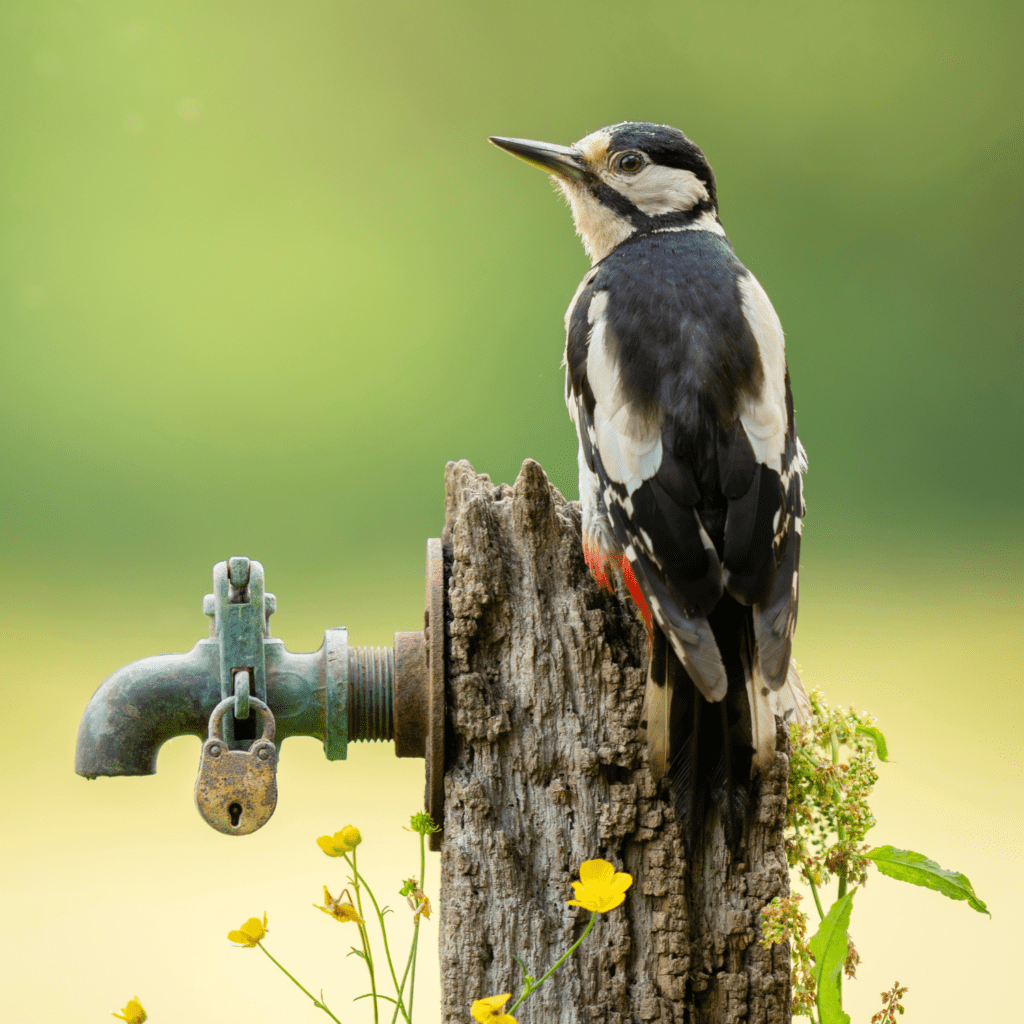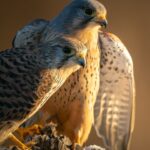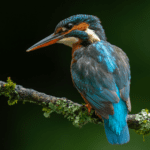
The Mighty Drummer of the UK Woodland: Discovering the Great Spotted Woodpecker
Imagine walking through the woods and suddenly, a rapid, rhythmic drumming breaks the silence, capturing your attention. I can guarantee that it is the sound of the great spotted woodpecker, a master carpenter of the bird world. With their striking black and white plumage accented by vivid red under-tails, they are not just a sight to behold but a fascinating subject for conservationists and wildlife enthusiasts alike.
The great spotted woodpecker, known scientifically as ‘Dendrocopos major’, thrives in wooded areas across the UK although they are absent in Northern Scotland and most of Ireland. As a wildlife photographer, I have had the privilege of capturing these charismatic creatures through my lens, witnessing their crucial role in our ecosystem. Their ability to forage for insects by pecking at tree bark not only showcases their importance in maintaining forest health but also highlights their specialised adaptations.
One of the most mesmerising aspects of this woodpecker is its unique feeding behaviour. Equipped with a shock-absorbent skull, robust beak, and long, sticky tongue, this bird can extract insects from deep within trees, controlling pest populations naturally. They mainly eat the larvae of wood-eating insects but in the spring months, they’ll also eat both the chicks and eggs of smaller birds. These woodpeckers will also feed on peanut kernels, sunflower seeds and fat balls provided in gardens, with nuts and berries becoming an important food source in the winter months.
Breeding season brings even more intrigue to the life of these woodpeckers. They are known for their remarkable nest-building skills, often chiselling out nest cavities in dead or dying trees. This not only provides them a safe haven for raising their young but also benefits other species, such as starlings and nuthatches, who may use these cavities in subsequent years.
For those keen on observing and photographing these spectacular birds, understanding their habitat requirements is crucial. They live in woods, copses, parks and sometimes in gardens with a good supply of dead wood essential for maintaining healthy populations. Conservation efforts that focus on protecting these habitats are vital, not just for the woodpeckers, but for the entire forest ecosystem.
This engaging exploration into the life of the great spotted woodpecker not only enhances our understanding but also enriches our commitment to preserving the natural world. As I share these stories and images, I want to bring awareness and appreciation of wildlife conservation, integral to our coexistence with nature.
Statistics
Length: 21-23cm
Wingspan: 36cm
Weight: 85g
Average lifespan: 2 years
Conservation Status
Classified in the UK as Green under the Birds of Conservation Concern 5: the Red List for Birds (2021).
When To See
January to December


You may also like
A Winter Morning with the Kestrels in Somerset
Diffusing light from your flash
Featured Posts


GET SOCIAL
INSTAGRAM
@snowboard.paul
@macro.paul
TWITTER
@paul__browning_
FACEBOOK
@snowboardpaul
@macro.paul.surrey
Get in Touch
GET SOCIAL
INSTAGRAM
@snowboard.paul
@macro.paul
TWITTER
@paul__browning_
FACEBOOK
@snowboardpaul
@macro.paul.surrey












Leave a Reply